Abstract
Auditory responses in the caudomedial neostriatum (NCM) of the zebra finch (Taeniopygia guttata) forebrain habituate to repeated presentations of a novel conspecific song. This habituation is long lasting and specific to individual stimuli. We here test the acoustic and ethological basis of this stimulus-specific habituation by recording extracellular multiunit activity in the NCM of awake male and female zebra finches presented with a variety of conspecific and heterospecific vocalizations, white noise, and tones. Initial responses to conspecific song and calls and to human speech were higher than responses to the other stimuli. Immediate habituation rates were high for all novel stimuli except tones, which habituated at a lower rate. Habituation to conspecific calls and songs outlasted habituation to other stimuli. The extent of immediate habituation induced by a particular novel song was not diminished when other conspecific songs were presented in alternation. In addition, the persistence of habituation was not diminished by exposure to other songs before testing, nor was it influenced by gender or laterality. Our results suggest that the NCM is specialized for remembering the calls and songs of many individual conspecifics.
Full text
PDF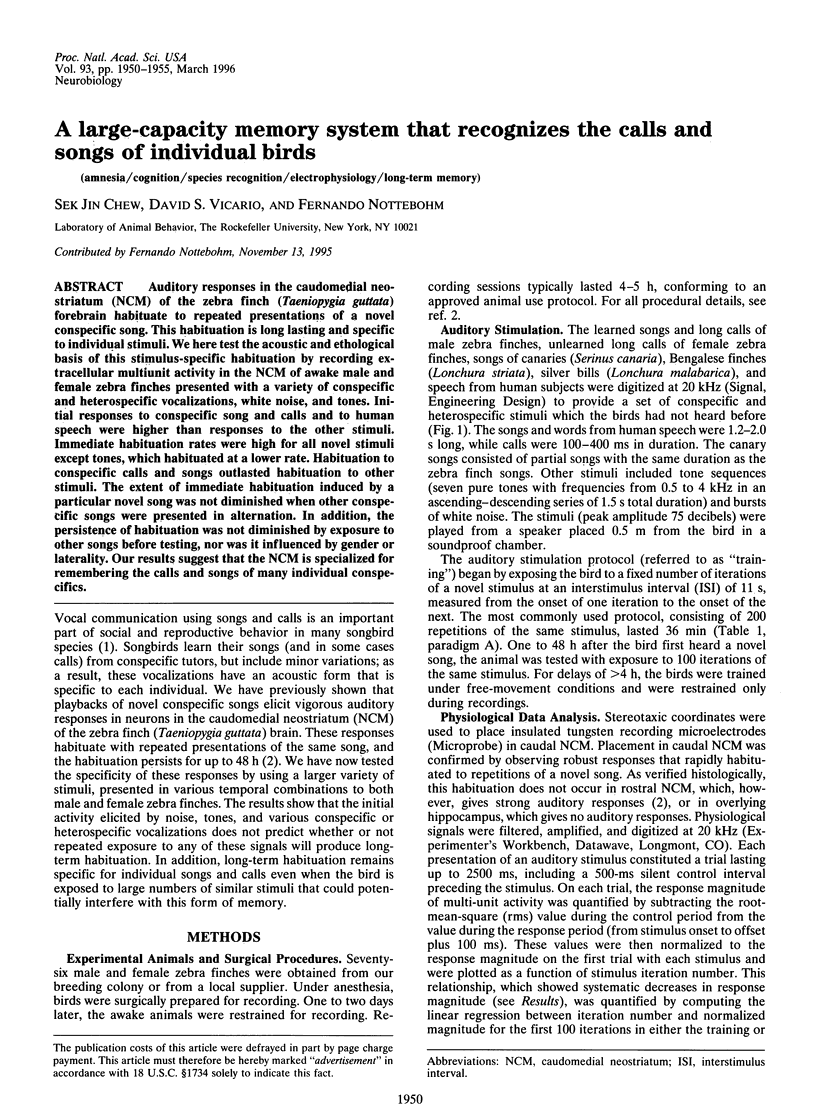
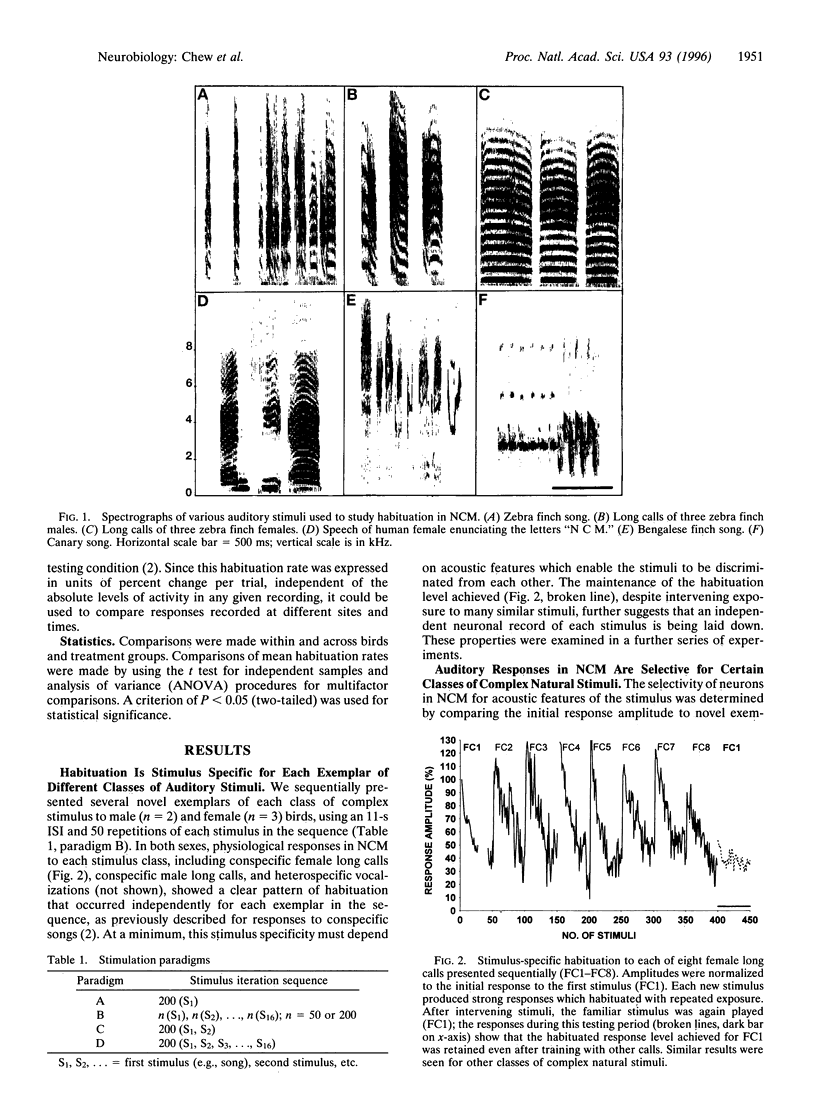
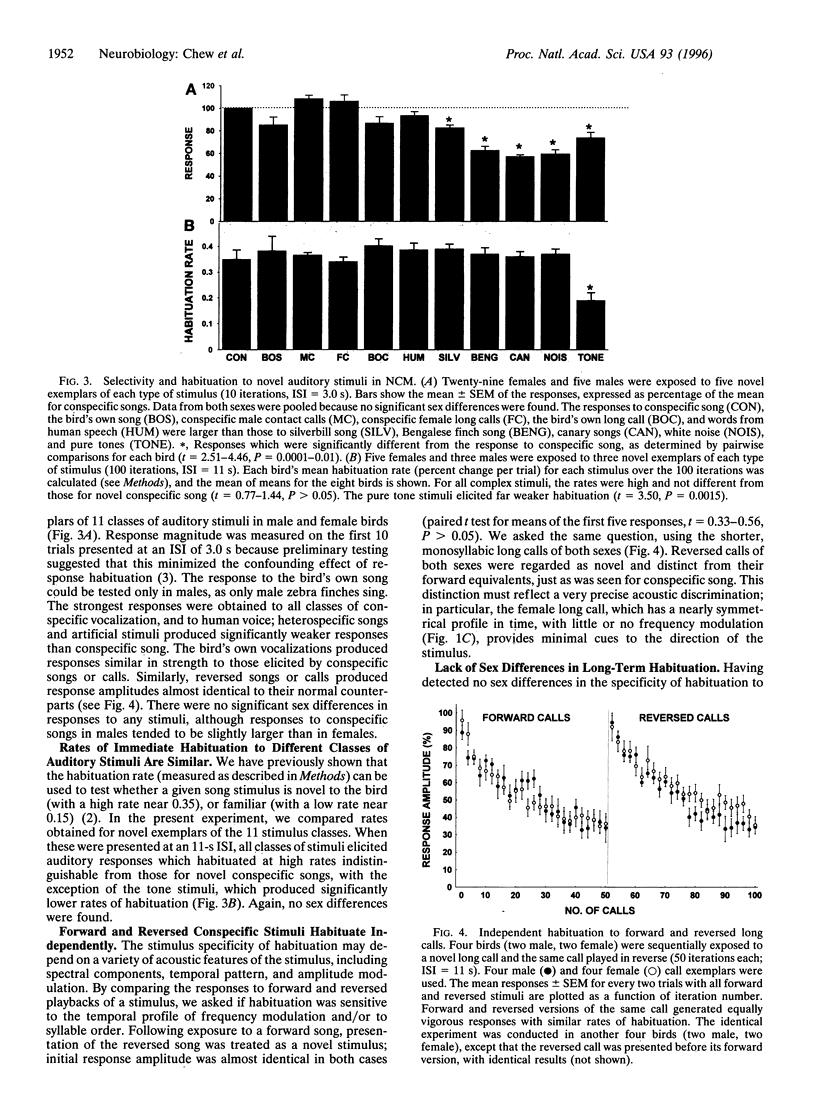
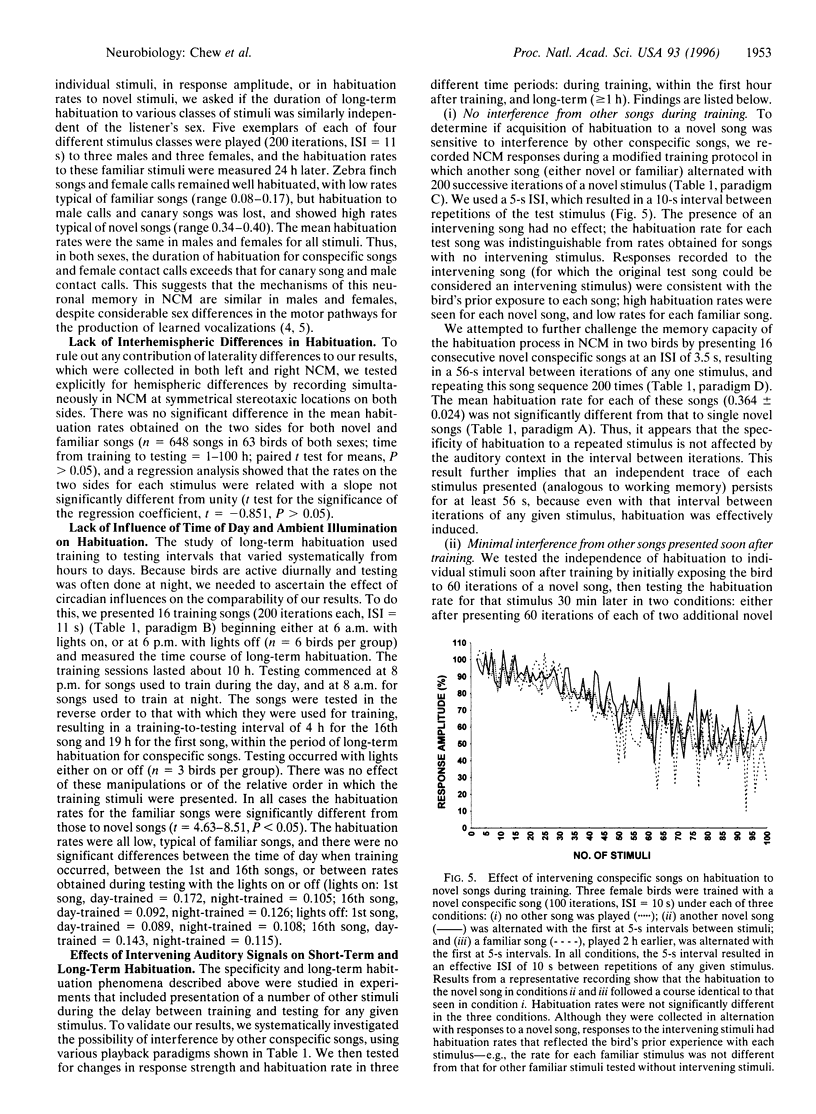
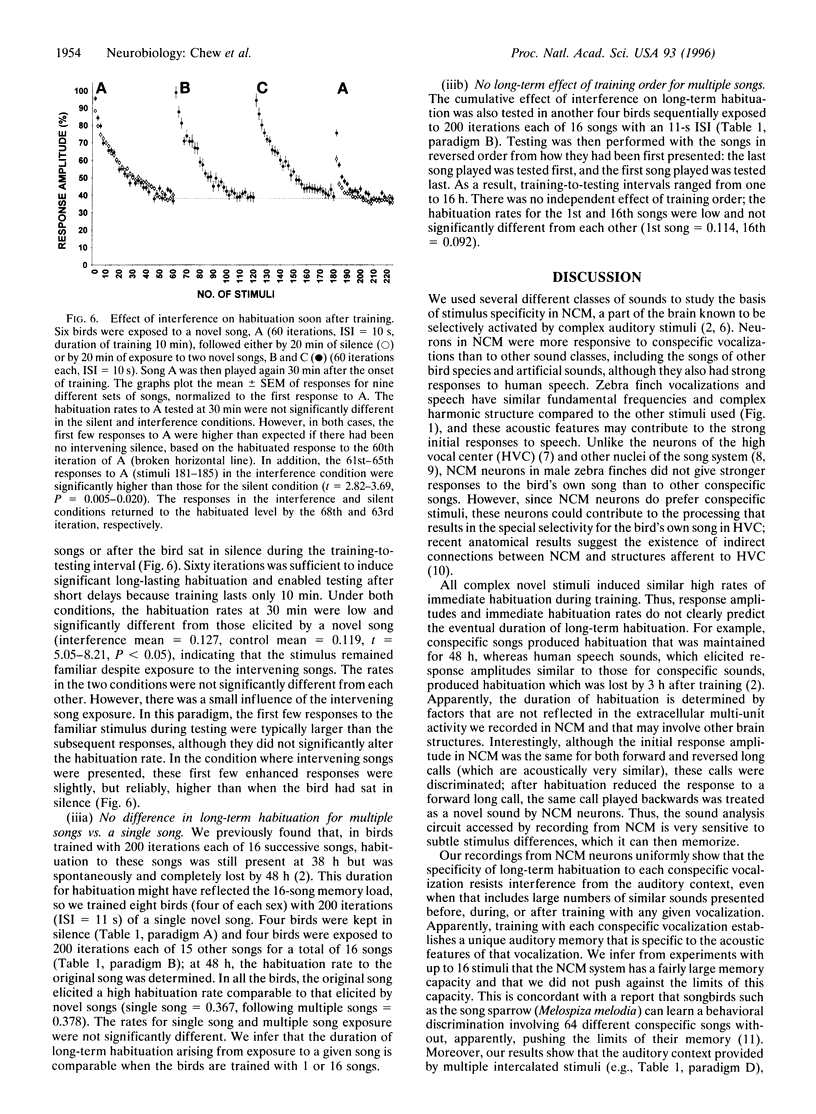
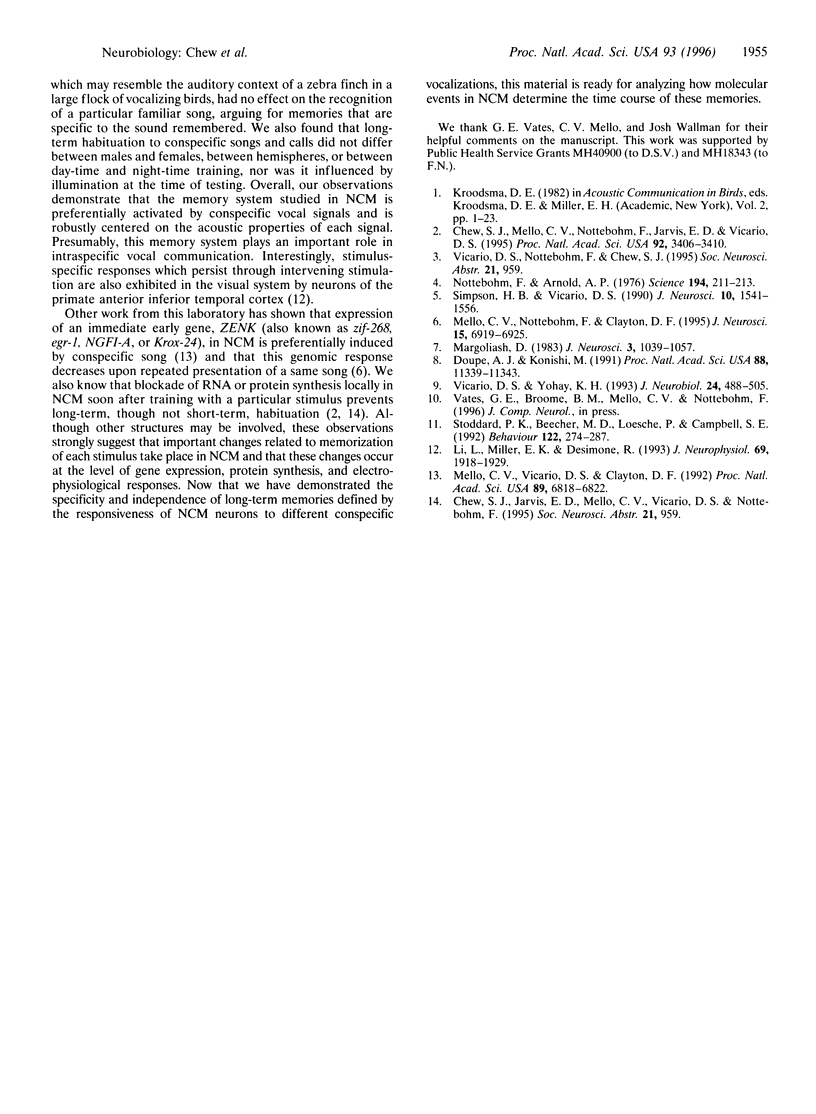
Selected References
These references are in PubMed. This may not be the complete list of references from this article.
- Chew S. J., Mello C., Nottebohm F., Jarvis E., Vicario D. S. Decrements in auditory responses to a repeated conspecific song are long-lasting and require two periods of protein synthesis in the songbird forebrain. Proc Natl Acad Sci U S A. 1995 Apr 11;92(8):3406–3410. doi: 10.1073/pnas.92.8.3406. [DOI] [PMC free article] [PubMed] [Google Scholar]
- Doupe A. J., Konishi M. Song-selective auditory circuits in the vocal control system of the zebra finch. Proc Natl Acad Sci U S A. 1991 Dec 15;88(24):11339–11343. doi: 10.1073/pnas.88.24.11339. [DOI] [PMC free article] [PubMed] [Google Scholar]
- Li L., Miller E. K., Desimone R. The representation of stimulus familiarity in anterior inferior temporal cortex. J Neurophysiol. 1993 Jun;69(6):1918–1929. doi: 10.1152/jn.1993.69.6.1918. [DOI] [PubMed] [Google Scholar]
- Margoliash D. Acoustic parameters underlying the responses of song-specific neurons in the white-crowned sparrow. J Neurosci. 1983 May;3(5):1039–1057. doi: 10.1523/JNEUROSCI.03-05-01039.1983. [DOI] [PMC free article] [PubMed] [Google Scholar]
- Mello C. V., Vicario D. S., Clayton D. F. Song presentation induces gene expression in the songbird forebrain. Proc Natl Acad Sci U S A. 1992 Aug 1;89(15):6818–6822. doi: 10.1073/pnas.89.15.6818. [DOI] [PMC free article] [PubMed] [Google Scholar]
- Mello C., Nottebohm F., Clayton D. Repeated exposure to one song leads to a rapid and persistent decline in an immediate early gene's response to that song in zebra finch telencephalon. J Neurosci. 1995 Oct;15(10):6919–6925. doi: 10.1523/JNEUROSCI.15-10-06919.1995. [DOI] [PMC free article] [PubMed] [Google Scholar]
- Nottebohm F., Arnold A. P. Sexual dimorphism in vocal control areas of the songbird brain. Science. 1976 Oct 8;194(4261):211–213. doi: 10.1126/science.959852. [DOI] [PubMed] [Google Scholar]
- Simpson H. B., Vicario D. S. Brain pathways for learned and unlearned vocalizations differ in zebra finches. J Neurosci. 1990 May;10(5):1541–1556. doi: 10.1523/JNEUROSCI.10-05-01541.1990. [DOI] [PMC free article] [PubMed] [Google Scholar]
- Vicario D. S., Yohay K. H. Song-selective auditory input to a forebrain vocal control nucleus in the zebra finch. J Neurobiol. 1993 Apr;24(4):488–505. doi: 10.1002/neu.480240407. [DOI] [PubMed] [Google Scholar]


